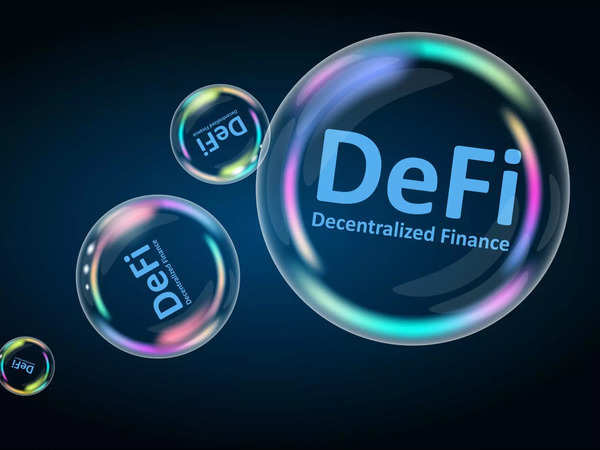Decentralized finance (DeFi), is a new financial system built on blockchain technology. It
bypasses traditional institutions like banks by using smart contracts to automate financial
transactions directly between people. This allows for more open, transparent, and potentially
lower-cost financial services.

KEY TAKEAWAYS
- Cutting Out the Middleman: DeFi leverages blockchain technology to automate
financial transactions directly between users, eliminating the need for traditional financial
institutions. - Building Blocks of DeFi: Cryptocurrencies, blockchain technology, and specialized
software form the foundation of DeFi, enabling these peer-to-peer financial interactions. - Early Stage with Growing Pains: While DeFi offers a glimpse into a future financial
landscape, it’s still under development and susceptible to security vulnerabilities due to
potential code weaknesses and a lack of rigorous testing before launch.
How Decentralized Finance (DEFI) Works
DeFi leverages advancements in security protocols, connectivity, software, and hardware to
create a peer-to-peer financial network. This bypasses the need for traditional intermediaries
like banks and financial institutions. In the current system, these institutions charge fees for their
services, which are unavoidable due to the way traditional finance operates. DeFi, powered by
blockchain technology, disrupts this model by facilitating financial interactions directly
between users, potentially reducing costs associated with intermediaries.
Here’s how it works:
- Blockchain as the Foundation: Imagine a public ledger, constantly recording and
verifying transactions. That’s essentially a blockchain, the technology underpinning DeFi.
All DeFi transactions are securely recorded on this blockchain, ensuring transparency and
immutability. - Smart Contracts: The Rulebook: DeFi utilizes smart contracts, self-executing programs
on the blockchain. These contracts define the terms of financial agreements (loans,
borrows, trades) and automatically execute them when predetermined conditions are met.
Think of them as automated vending machines for financial products. - Cutting Out the Middleman: Traditionally, banks act as intermediaries, verifying
identities and managing transactions. In DeFi, users connect directly through DeFi
applications (dApps) built on the blockchain. This eliminates the need for intermediaries,
potentially reducing fees and increasing accessibility. - Cryptocurrency as Fuel: DeFi transactions often use cryptocurrencies as the medium of
exchange. These digital assets can be easily transferred between users on the blockchain
network.
DeFi tokens, similar to electronic shares, control and secure the main network. Importantly, a
significant chunk of these tokens are held by the development teams themselves. This dual
wielding of tokens offers the teams a strategic advantage.
On one hand, they can potentially profit from price speculation, just like owning company stock.
If the project gains traction, the value of their tokens could rise significantly.
On the other hand, the teams are incentivized to ensure the DeFi protocol functions flawlessly
and keeps the network secure. By effectively managing these tasks, they earn additional rewards
built into the system itself. This creates a win-win scenario where the team’s success is tied to the
project’s success, fostering a strong commitment to building a robust DeFi ecosystem.
Reference List:
Coinmarketcap: Defi projects on top.
Decentralized Finance – Revolutionizing the Future.
Digital Financial Solutions.
